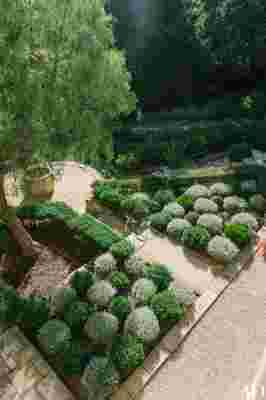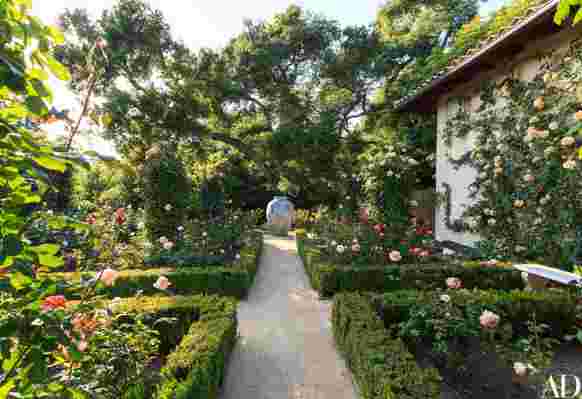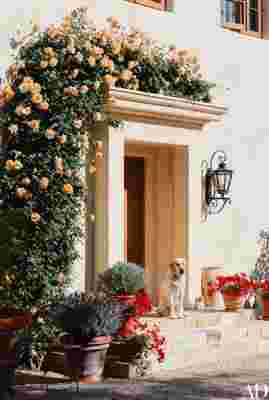An Architect Creates a Rustic, Mediterranean-Inspired Garden
It seems a bit crazy in retrospect, but before Joanna and I were married, I suggested we buy this property together and build on it someday. She thought it rash and was not initially keen on the idea, but I told her not to worry, that even if our relationship didn’t work out, it would be a sensible real-estate investment. I’m pleased to say that, in the end, both have proven successful.
After a 40-year career as an architect, designing houses for many clients , I was finally confronted with designing one for myself and my family—surprisingly, something I had avoided all this time. Joanna and I both love Mediterranean architecture, our common ground, so the house I devised is a mixture of northern Italian and southern French influences, a farmhouse compound pretending to be a country villa. I like to think it looks like an architect had nothing to do with it, that it is and has been “of its place” for a long time. We called it Villa Corbeau, in jest, after the resident crows of the neighborhood.



The garden at Villa Corbeau follows suit and was designed to look like a Mediterranean garden gone to seed. About a half acre in size, it was accomplished over a year of Sundays in 2008 with help from friends and dedicated gardeners Pat Omweg and Alfredo Garcia. It’s laid out with vistas and pathways connecting various destinations and outbuildings, including a rose garden, pool pavilion, fountain, arbor, pergola, and potting shed. The pathways are decomposed granite with steps of local sandstone. Their axial geometry lends order to the whole, but the vegetation has been left to overgrow its borders, intruding here and there, crowding the paths and creating a slightly unkempt, older-looking landscape, an effect that became apparent just a few years after the garden was planted.
Although some Italian cypress and a couple of California pepper trees were added, the property was already dignified by several dozen mature California live oaks. These, along with bay laurel and Pittosporum undulatum (a.k.a. Victorian box tree), create a dense background, screening us from neighboring properties and making for a secluded private setting.
Because rain can be an infrequent event in Southern California, the palette of plant material is reasonably drought-tolerant . There are gravel terraces rather than lawns, and although occasional volunteer seeds are left to take root and some gift plants from friends have made their way into the mix, there are few water-hungry species in the garden. The sweet-dry fragrances of lavender, rosemary, jasmine, and other Mediterranean regulars, however, fill the air with rich memories of European travels.
For the full story, subscribe now and get the digital edition immediately.